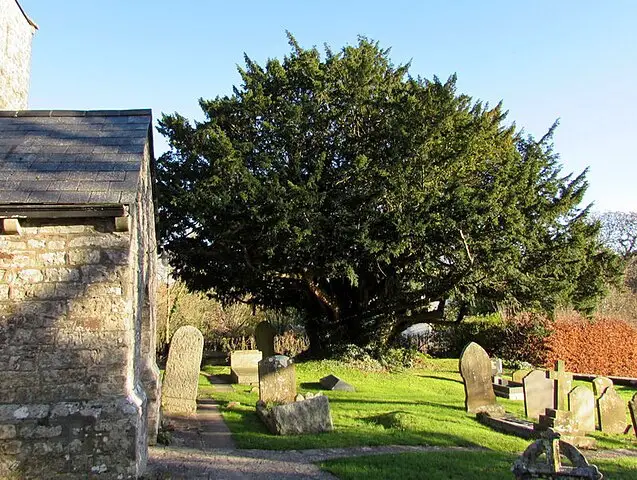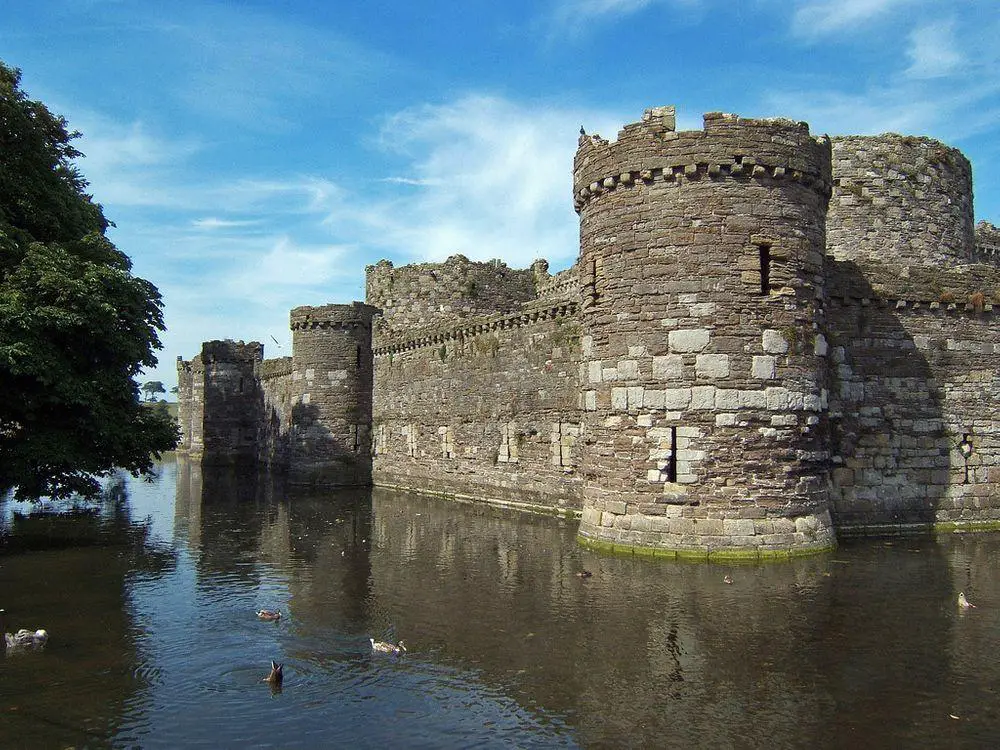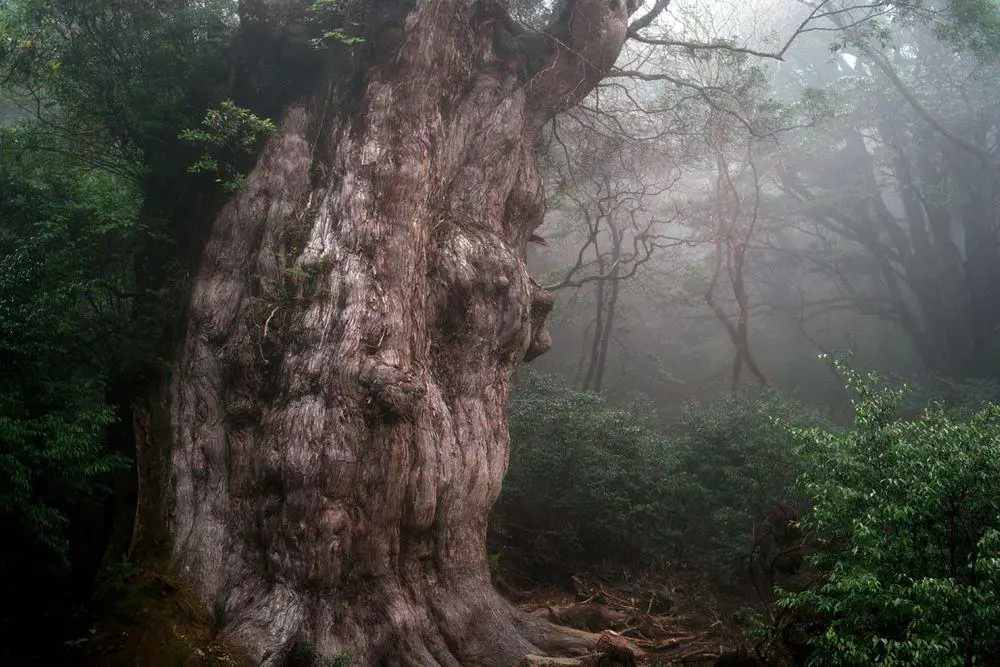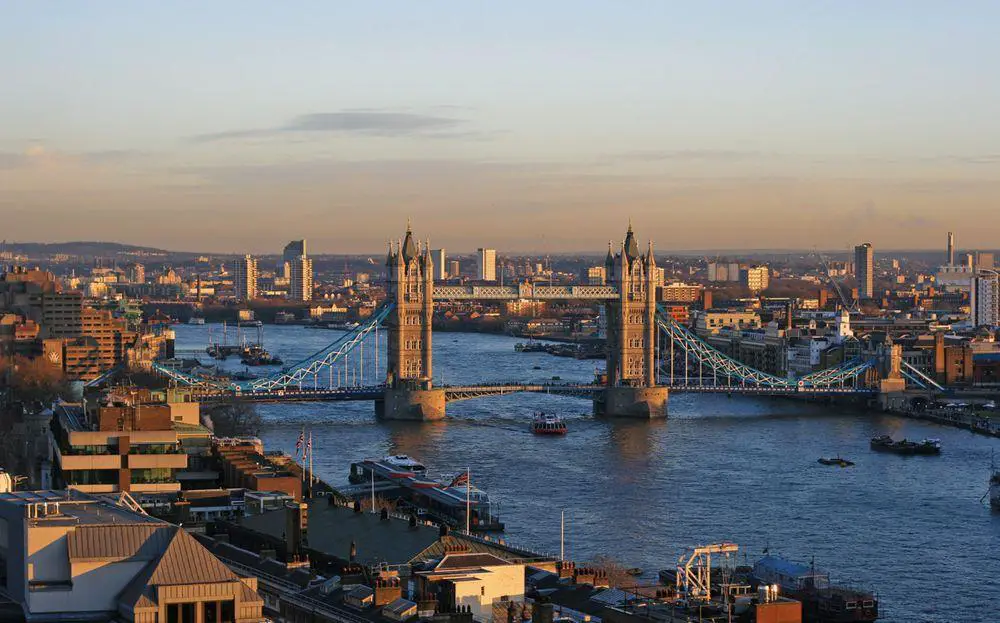World 🢖 Europe 🢖 United Kingdom 🢖 Wales 🢖 Vale of Glamorgan
Wonder
Yew at Michaelston-le-Pit

 In short
In short
Somewhat lesser known natural wonder is Yew at Michaelston-le-Pit – a giant yew tree at the St Michael and All Angels’ Church.
 35.3%
35.3%
GPS coordinates
Location, address
Species
Circumference
Map of the site
If you see this after your page is loaded completely, leafletJS files are missing.
 In detail
In detail
Not far from the centre of Cardiff is the small village of Michaelston-le-Pit. Most likely, it was founded in Norman times and its current name is linked to former owners before the middle of the 13th century – le Peyt family.
St Michael and All Angels’ Church
In the center of the village is an interesting church, that, initially, was built in the middle of the 13th century when the area of village was property of De Reigny family.
The church is an interesting building with fine details – doorway and lancets have survived since the 14th century, there are also later additions, e.g. windows in Perpendicular Gothic style.
Similar to most other churches in Britain, Angels’ Church was restored in the 19th century.
The giant yew tree
Close to the church, at its southern wall is a beautiful yew tree. Its giant trunk resembles an illustration from a fairy-tale book – but this is a reality!
The circumference of the tree is 9.15 m. One can walk through it – a giant hollow has opened to both sides, dividing the trunk into two sides and a kind of small trail leads through the tree.
There is a possibility that this yew marks an ancient site and church later was built next to it.
References
- Yew/Yews at Michaelston-le-Pit Wales, Ancient Yew Group. Accessed on December 10, 2023.
- Michaelston-Le-Pit History, Michaelston-Le-Pit and Leckwith Community Council. Accessed on December 10, 2023.
 Linked articles
Linked articles

Wonders of Wales
In Wales are located some of the most beautiful caves and waterfalls in the United Kingdom but even more are some of the world’s most impressive castles as well as medieval towns, palaces, and interesting archaeological monuments.

Trees
The category includes some of the most impressive and interesting separate trees in the world. The total number of tree species in the world still is a wild guess – maybe 10,000 and maybe 100,000 but most likely somewhere in between. Every month there are reported new tree species from the whole world, including Western Europe.

Wonders of the United Kingdom
Throughout many centuries the United Kingdom has enjoyed relative political stability and wealth. As a result, humans have created here countless amazing and well-preserved values of art and history.
 Recommended books
Recommended books
The God Tree
The God Tree is a great read and will make people think again and again about Yews’ – David Bellamy, the Naturalist. This is the first book to take up the quest for the Golden Bough since JG Frazer’s classic study in 1915 with the discovery of the bough growing once more, as the rare adornment of a small number of ancient Yews.
The Ancient Yew: A History of Taxus baccata
The gnarled, immutable yew tree is one of the most evocative sights in the British and Irish language, an evergreen impression of immortality, the tree that provides a living botanical link between our own landscapes and those of the distant past. This book tells the extraordinary story of the yew’s role in the landscape through the millennia, and makes a convincing case for the origins of many of the oldest trees, as markers of the holy places founded by Celtic saints in the early medieval ‘Dark Ages’.


